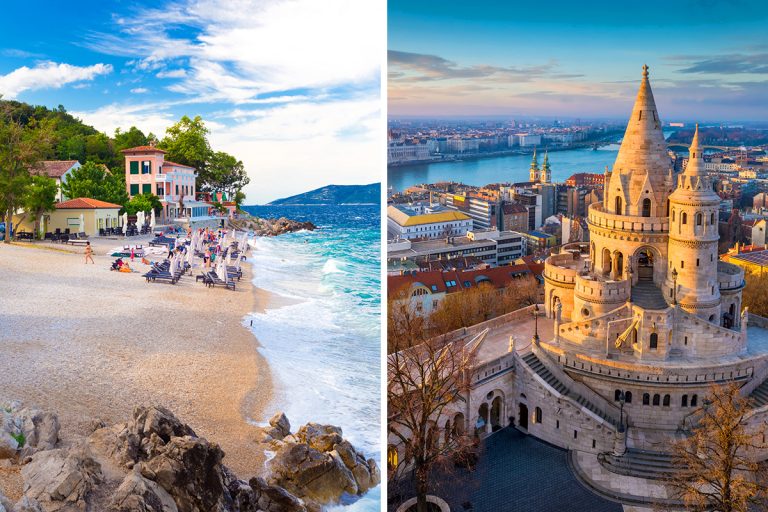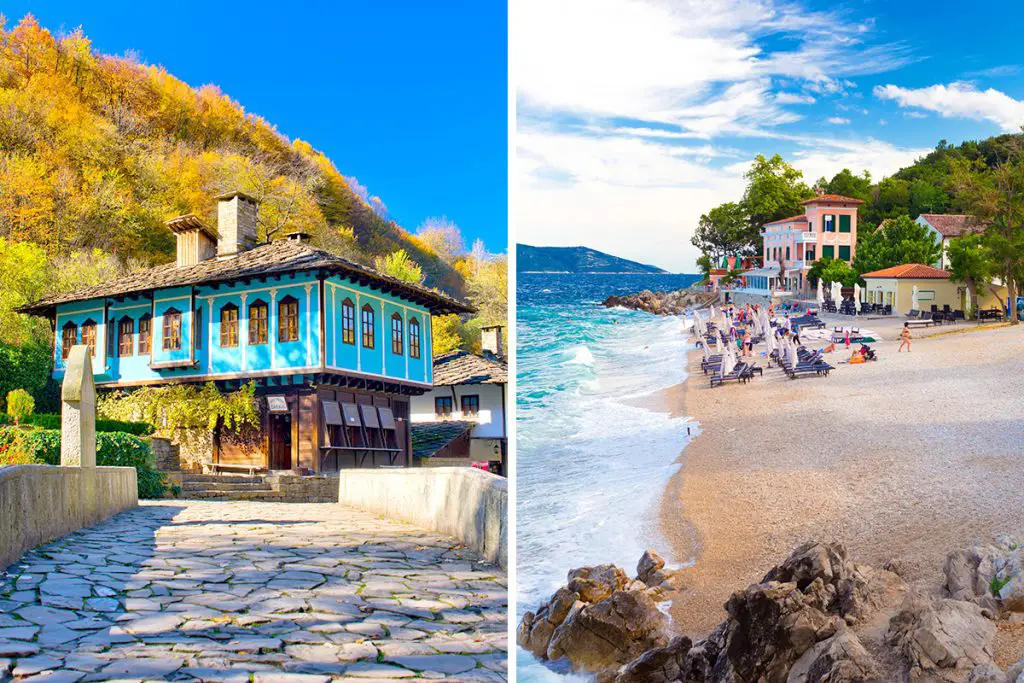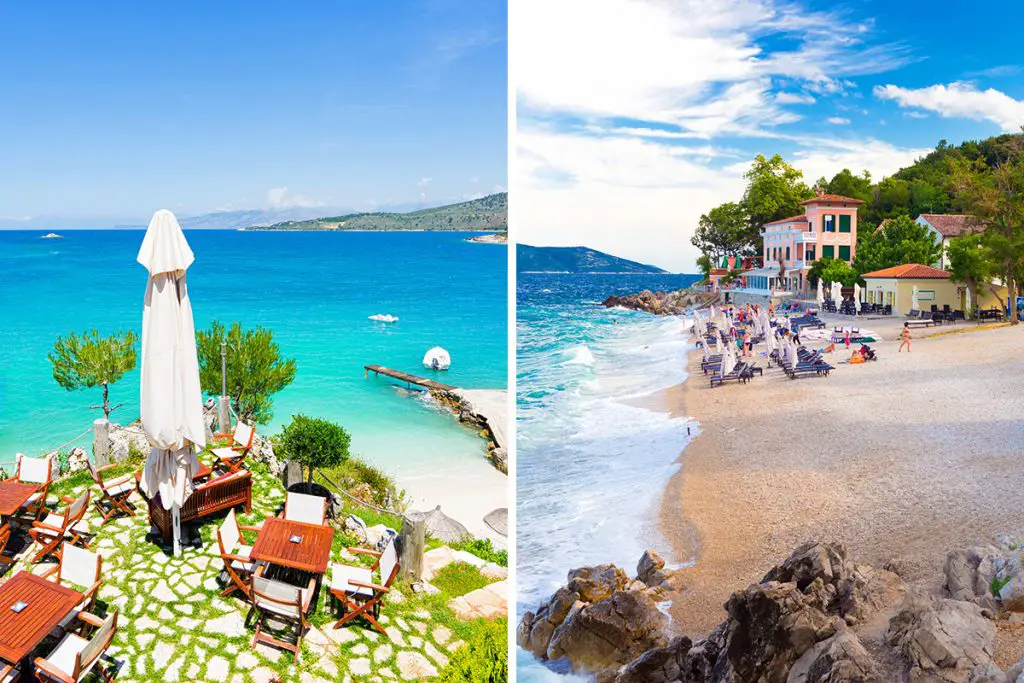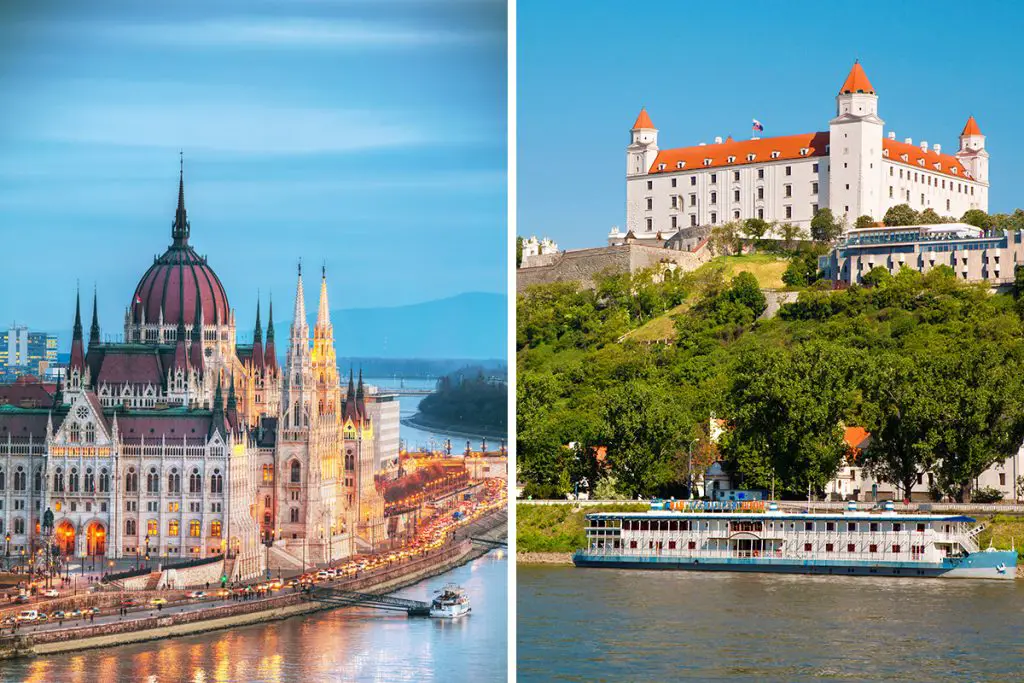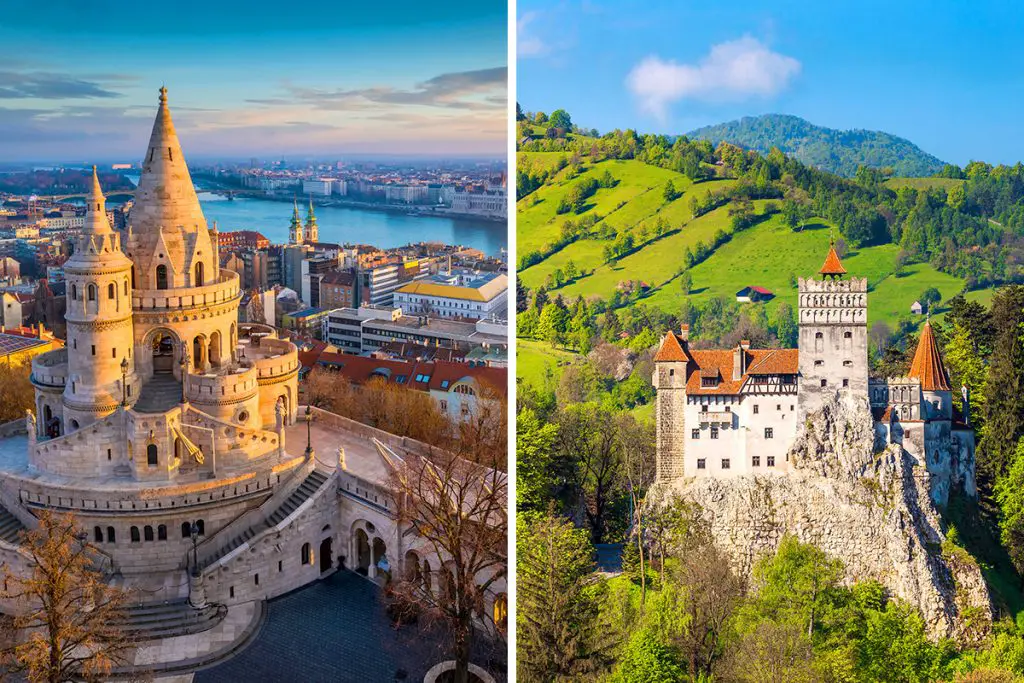As you dive deeper into the features of Croatia and Hungary, you’ll realize that each country has its own distinctive attractions that cater to different interests. Stay with us as we explore and compare these beautiful European gems so that you can decide which destination is perfect for your next adventure. Read on and let’s embark on this journey together!
History & Culture
In this section, you’ll explore the history and culture of Croatia and Hungary. You’ll learn how each country has developed over time.
Croatia’s history is fascinating. It’s full of stories about powerful kingdoms and empires. Today, the country has a rich cultural heritage, which you can see in its architecture and traditions. Hungary also has a storied past. It was once home to a mighty empire that left its mark on Europe. Like Croatia, Hungary’s culture and history are visible in its buildings and customs.
When you visit Croatia, you’ll feel the influence of different cultures. Over time, many groups have shaped the country’s identity. As you walk around, you’ll see remnants of these past societies, making it a place where history comes alive.
In contrast, Hungary has a more homogeneous culture. It has been influenced mainly by its own people and traditions. As a result, when you explore Hungary, you’ll get an authentic taste of its unique heritage and way of life.
Both Croatia and Hungary boast impressive historical sites. In Croatia, you’ll find Roman ruins, medieval cities, and ancient fortresses. These places offer a glimpse into the nation’s past and show you how it has evolved.
Hungary, on the other hand, features stunning castles, historic towns, and architectural wonders. These sites tell the tale of Hungary’s intriguing history and make you feel like you’ve stepped back in time.
In summary, Croatia offers a mix of cultures and influences, while Hungary provides a more authentic and homogeneous experience. Both countries have incredible histories that can be explored through their landmarks and traditions. No matter which destination you choose, you’ll be captivated by the richness of their history and culture.
Attractions & Activities
In this section, you’ll discover some of the amazing attractions and activities in both Croatia and Hungary. Get ready to be inspired for your next trip!
Croatia has plenty to offer. You can explore national parks, like Plitvice Lakes, where you’ll see stunning waterfalls and lush greenery. Or, visit the ancient city of Dubrovnik, with its impressive city walls and historic charm.
In Hungary, you can find unique attractions, such as the famous thermal baths in Budapest. You can also explore the picturesque Danube River by taking a scenic cruise or strolling along its banks.
Croatia’s attractions are great for nature lovers. You can hike in Paklenica National Park or go rafting on the Cetina River. There are also countless islands to explore, each with its own beauty and charm.
Hungary, on the other hand, offers more urban experiences. You can visit historic landmarks, like Buda Castle, or marvel at the stunning architecture of Parliament. For art enthusiasts, there are numerous museums and galleries to explore.
In Croatia, you can immerse yourself in history by visiting sites like Diocletian’s Palace in Split. This well-preserved Roman palace will transport you back in time. Another must-see is the UNESCO-listed Stari Grad Plain on Hvar Island, an ancient agricultural landscape.
Hungary also has plenty of historical sites to explore. The charming town of Eger is home to a magnificent castle and beautiful baroque buildings. Or, visit the quaint village of Hollókő, a UNESCO World Heritage Site known for its traditional houses.
For adventure seekers, Croatia offers exciting activities such as zip-lining in Omis, or sea kayaking around the Elaphiti Islands. These thrilling experiences will surely leave you with lasting memories.
Similarly, Hungary provides adventure opportunities like caving in the Buda Hills or horseback riding through the scenic countryside. These activities allow you to explore Hungary’s natural beauty in a unique and exciting way.
In conclusion, both Croatia and Hungary offer a wide range of attractions and activities. Croatia is an ideal destination for those who love nature and history, while Hungary caters more to urban explorers and art enthusiasts. Whether you’re an adventurer or a history buff, you’ll find something to enjoy in these captivating countries.
Beaches
This section will compare the beaches in Croatia and Hungary. You’ll learn about the coastal delights each destination offers to sunseekers.
Croatia is famous for its coastline. With over 1,100 miles (1,770 kilometers) of beautiful beaches, you’ll find a perfect spot to relax. The beaches here are a mix of pebbles and sand, offering something for everyone.
Hungary, however, is a landlocked country. It doesn’t have a coastline, but it does have Lake Balaton. This large lake, about 48 miles (77 kilometers) long, has several beaches where you can enjoy the sun and water.
Croatian beaches are known for their crystal-clear water. The Adriatic Sea provides an excellent setting for swimming, snorkeling, and diving. You can explore hidden coves and discover beautiful underwater worlds.
Lake Balaton’s beaches in Hungary have a different charm. The shallow water makes it great for families and those who prefer calmer waters. You can also try fun water activities like paddleboarding and windsurfing.
In Croatia, you’ll find popular beaches like Zlatni Rat on Brac Island. It’s a unique, white-pebble beach that changes shape with the currents. Another favorite is Banje Beach in Dubrovnik, with its stunning views of the old city.
At Lake Balaton, you can visit beaches such as Siofok’s Golden Shore or Balatonfured’s Silver Shore. These sandy beaches are lined with cafes and offer plenty of amenities for a comfortable day by the water.
In summary, Croatia’s coastline provides numerous beach options for sunbathers and water sports enthusiasts. Hungary, on the other hand, offers the freshwater experience of Lake Balaton with its family-friendly beaches. Both destinations provide an opportunity to enjoy the sun and take a refreshing dip, whether it’s in the sea or a lake.
Eating, Drinking & Nightlife
In this section, you’ll learn about the eating, drinking, and nightlife experiences in both Croatia and Hungary. Get ready to discover the flavors and fun each country offers.
Croatian cuisine is a delightful blend of Mediterranean and Eastern European flavors. You’ll enjoy dishes like seafood risotto, hearty stews, and delicious pastries. Fresh, local ingredients are the stars of every meal.
Hungarian food is hearty and flavorful. You’ll savor traditional dishes like goulash, langos, and chimney cake. Spices like paprika give Hungarian cuisine its distinct taste, making it truly unique.
Croatia offers great wineries and local brews. You can taste excellent wines from regions like Istria and Dalmatia. Craft beer lovers will also find unique brews to enjoy at local bars and pubs.
In Hungary, you can enjoy famous drinks like Tokaji wine and Hungarian pálinka. Local bars offer a range of beverages to suit your taste buds. The country’s wine regions produce exceptional wines to savor.
Croatian nightlife is vibrant and diverse. You’ll find lively bars and clubs in cities like Split and Dubrovnik. Island destinations like Hvar also offer unforgettable party experiences under the stars.
Hungary’s nightlife, especially in Budapest, is equally exciting. Ruin bars, unique venues in old buildings, are a must-visit. You’ll also find clubs and bars where you can dance the night away.
In summary, both Croatia and Hungary offer diverse and enjoyable eating, drinking, and nightlife experiences.
Croatian cuisine boasts a mix of Mediterranean and Eastern European flavors, while Hungarian food is known for its hearty dishes and unique spices. You can also taste excellent wines and local beverages in both countries. Nightlife in Croatia and Hungary caters to different tastes, from lively clubs to unique bars, ensuring memorable nights out for everyone.
Shopping
In this section, you’ll compare the shopping experiences in Croatia and Hungary. Discover where to find unique souvenirs and local products in each destination.
Croatia offers a variety of shopping options. From bustling markets to charming boutiques, you’ll find something special. Local crafts, olive oil, and lavender products are popular items to take home.
Hungary also provides a range of shopping experiences. You can explore lively markets, stylish malls, and quaint shops. Traditional souvenirs include hand-painted porcelain, embroidered textiles, and Hungarian paprika.
In Croatia, local markets are a must-visit. You can find fresh produce, handmade crafts, and unique souvenirs. Shopping in these markets allows you to experience Croatian culture while supporting local artisans.
Hungary has its own vibrant markets. You’ll discover a mix of traditional crafts and local delicacies. These markets are perfect for finding authentic Hungarian souvenirs and experiencing the country’s rich heritage.
Croatian shopping also includes charming boutiques in towns like Dubrovnik and Split. These shops offer locally made products, such as jewelry and clothing. You’ll find one-of-a-kind items that make great gifts or mementos.
In Hungary, you can explore stylish malls and specialty shops. Budapest, for example, offers a mix of high-end stores and unique boutiques. Shopping in Hungary allows you to find both international brands and local treasures.
In conclusion, both Croatia and Hungary offer enjoyable shopping experiences. Croatia’s markets and boutiques showcase local crafts and products, while Hungary’s markets and malls feature a mix of traditional and modern shopping options. No matter which destination you choose, you’ll find unique souvenirs and gifts to bring back from your travels.
Accommodation
In this section, you’ll compare the accommodation options in Croatia and Hungary. Find out what types of lodgings await you in these beautiful countries.
Croatia offers a wide range of accommodations. From cozy guesthouses to luxurious resorts, you’ll find a place that fits your needs. Many travelers enjoy staying in charming stone villas near the sea.
Hungary also provides diverse lodging choices. You can choose from budget-friendly hostels, elegant hotels, or unique apartments. Historic hotels and thermal spa resorts are popular options for a truly memorable stay.
In Croatia, you can experience local hospitality by staying in a guesthouse or bed and breakfast. These accommodations often feature stunning views and delicious homemade meals, making your stay even more special.
In Hungary, you can opt for stylish boutique hotels or well-known chains. These accommodations provide modern amenities and attentive service, ensuring a comfortable stay while exploring the country.
To sum up, both Croatia and Hungary offer a variety of accommodation options to suit different preferences and budgets. Croatia’s guesthouses and villas provide a charming experience, while Hungary’s hotels and resorts cater to those seeking modern comforts. Whichever destination you choose, you’ll find a welcoming place to rest after a day of adventure.
Family-Friendliness & Children’s Activities
In this section, you’ll explore the family-friendliness and children’s activities in Croatia and Hungary. Discover which destination is perfect for your next family vacation.
Croatia is an excellent choice for family trips. With its beautiful beaches, national parks, and outdoor activities, there’s something for everyone. Kids will love the water sports and exploring the country’s natural beauty.
Hungary also offers an array of family-friendly attractions. From museums to thermal baths, this country is ideal for families seeking a mix of culture and relaxation. Children will enjoy the interactive exhibits and fun outdoor activities.
In Croatia, you’ll find plenty of activities for children. Beaches with shallow waters and playgrounds are perfect for younger kids. Older children can try snorkeling, kayaking, or even zip-lining in some locations.
Hungary has its fair share of kid-friendly activities too. Visiting museums with interactive exhibits, like the Hungarian Railway Museum, will keep children engaged. You can also explore parks and take scenic train rides through the countryside.
Croatian family-friendly accommodations range from seaside resorts to spacious apartments. Many lodgings offer amenities like pools, playgrounds, and kids’ clubs to ensure your little ones have a great time.
Family-friendly hotels and resorts in Hungary cater to children with specialized menus, kids’ clubs, and entertainment. You’ll find accommodations that make families feel welcome and ensure a comfortable stay for everyone.
In conclusion, both Croatia and Hungary are excellent destinations for family vacations. Croatia’s beaches and outdoor activities make it a natural playground for children, while Hungary’s museums and thermal baths offer a mix of culture and relaxation. Family-friendly accommodations in both countries provide amenities to make your stay enjoyable for everyone. Whichever destination you choose, your family will create lasting memories.
Getting There & Getting Around
In this section, you’ll compare how to get to and travel around Croatia and Hungary. Discover the transportation options available to help you make the most of your visit.
To reach Croatia, you can fly into its main airports in Zagreb, Dubrovnik, and Split. The flight time from New York to Zagreb is around 9 hours (7,174 km or 4,458 miles). From London, it takes about 2.5 hours (1,465 km or 910 miles).
Hungary is also easily accessible by air. Budapest’s international airport is the main gateway. The flight from New York to Budapest takes approximately 9 hours (7,005 km or 4,352 miles), while from London, it’s a 2.5-hour journey (1,470 km or 913 miles).
Getting around Croatia is quite convenient. You can rent a car, take buses between cities, or even use ferries to explore the islands. However, the train network is limited, mainly serving the northern part of the country.
In Hungary, transportation is well-organized. Trains and buses connect major cities, and car rentals are available. Budapest has an extensive public transportation system, including buses, trams, and a metro.
For traveling within Croatian cities, local buses are a popular option. Taxis and rideshare services are also available, making it easy to explore at your own pace.
In Hungarian cities like Budapest, public transportation is efficient and affordable. You can use a combination of buses, trams, and the metro to navigate the city. Taxis and rideshare services are also accessible.
In conclusion, both Croatia and Hungary offer convenient transportation options for getting there and getting around. While Croatia’s train network is limited, ferries and buses provide alternatives for exploring the country. Hungary has a well-organized public transportation system, making it easy to travel between cities and within urban areas. No matter which destination you choose, you’ll have no trouble exploring these beautiful countries.
Weather
In this section, you’ll compare the weather in Croatia and Hungary. Knowing what to expect will help you plan your trip and pack the right clothes.
Croatia has a Mediterranean climate along the coast, with warm summers and mild winters. Summer temperatures average around 80°F (27°C), while winters hover around 50°F (10°C). The inland areas experience a more continental climate, with colder winters and warmer summers.
Hungary has a continental climate, with four distinct seasons. Summers are warm, with average temperatures around 75°F (24°C), while winters can be cold, with temperatures dropping to 30°F (-1°C). Spring and autumn offer milder weather, ideal for sightseeing.
In Croatia, the coastal region is perfect for beach lovers during the summer months. However, if you’re planning to visit inland areas or national parks, you might want to avoid the peak summer heat.
In Hungary, the best time to visit is during the spring and autumn, when temperatures are more comfortable for exploring the cities and countryside. Winter can be quite cold, but it offers a unique charm, especially if you enjoy ice-skating or Christmas markets.
In summary, the weather in Croatia and Hungary varies depending on the region and time of year. Coastal Croatia offers a Mediterranean climate, while Hungary and inland Croatia experience a continental climate. No matter when you choose to visit, both countries have their unique charm and appeal.
Safety
Safety is an important consideration when planning your trip. In this section, you’ll compare the safety of Croatia and Hungary to help you make an informed decision.
Both Croatia and Hungary are generally safe destinations for tourists. Common sense and basic precautions, like keeping an eye on your belongings and avoiding poorly lit areas at night, apply in both countries. Violent crime is relatively low, and both countries have well-trained police forces.
In Croatia, you should be aware of pickpockets, especially in crowded tourist areas and on public transportation. Similarly, Hungary also experiences some petty theft in popular spots like Budapest. Keep your belongings secure and stay vigilant in busy locations.
As for unique safety concerns, Croatia’s beautiful coastline sometimes experiences strong currents, so you should always obey local safety warnings when swimming. In Hungary, be cautious of taxi drivers overcharging tourists, and it’s best to use a reputable taxi company or a rideshare app.
Overall, Croatia and Hungary are relatively safe destinations for travelers. Being aware of your surroundings, following local safety guidelines, and using common sense will help ensure a safe and enjoyable trip to either country.
Cost
When planning your vacation, comparing the costs of Croatia and Hungary can help you budget effectively. In this section, you’ll learn about the differences in costs between these two destinations.
Croatia, with its stunning beaches and picturesque towns, is generally more expensive than Hungary. Accommodation, food, and activities can be pricier, especially during the peak tourist season. For example, a mid-range meal in Croatia might cost around 100 HRK ($15), while the same meal in Hungary could be around 3,000 HUF ($10).
Hungary, on the other hand, is known for being budget-friendly. Budapest, its capital, offers a range of affordable accommodation options and dining experiences. The cost of public transportation and entrance fees to attractions are also typically lower than in Croatia.
However, it’s important to note that costs can vary depending on your personal preferences and travel style. Both Croatia and Hungary offer a range of options to suit different budgets, from luxury hotels to budget-friendly hostels.
In conclusion, Hungary is generally more affordable than Croatia, making it a better option for budget-conscious travelers. However, with careful planning and research, you can still enjoy an amazing vacation in either country without breaking the bank.
Which Is Better – Croatia or Hungary?
Now that you have explored the various aspects of both Croatia and Hungary, it’s time to decide which destination is the better choice for your vacation.
In terms of history and culture, Croatia offers a blend of Mediterranean, Central European, and Balkan influences, while Hungary boasts a rich and diverse heritage that sets it apart from its neighbors. If you’re a history and culture enthusiast, you might find it hard to choose between these two fascinating destinations.
When it comes to attractions and activities, both countries have plenty to offer. Croatia is known for its beautiful coastline, ancient towns, and national parks, while Hungary features stunning architecture, thermal baths, and cultural experiences. Your personal preferences will play a significant role in deciding which destination offers the attractions and activities that suit you best.
If pristine beaches and crystal-clear waters are high on your priority list, Croatia is the clear winner with its stunning Adriatic coastline. Hungary is a landlocked country, so beach lovers will find Croatia more appealing.
For foodies, both countries offer unique culinary experiences, but Hungary might have an edge with its diverse and flavorful cuisine. Nightlife enthusiasts will also find that both countries have vibrant scenes, with Budapest being a particular hotspot for lively bars and clubs.
Shopping-wise, Hungary is more budget-friendly, offering a variety of shopping experiences from traditional markets to modern malls. Croatia also has shopping options but may be slightly more expensive.
In terms of accommodation, both Croatia and Hungary provide various options for different budgets. Your choice will depend on your personal preferences and the type of accommodation you’re looking for.
For families, both countries offer family-friendly attractions and activities. However, Croatia’s beaches and outdoor adventures may make it a more appealing choice for a family vacation.
When it comes to getting there and getting around, both countries have good transportation networks. Croatia offers more coastal options with ferries, while Hungary provides efficient rail and bus systems.
Weather-wise, Croatia has a Mediterranean climate with warm summers and mild winters, while Hungary experiences more distinct seasons. Your preferred weather conditions will influence which destination you choose.
Safety is a priority for most travelers, and both Croatia and Hungary are considered safe destinations with low crime rates. However, it’s always essential to take the usual precautions and stay vigilant.
Finally, cost is an important factor in choosing a destination. In general, Hungary is more affordable than Croatia, making it an excellent choice for budget-conscious travelers.
In conclusion, both Croatia and Hungary have their unique charms and attractions, making them ideal destinations for different types of travelers. Your personal preferences, interests, and budget will ultimately determine which destination is the better choice for your next vacation.

